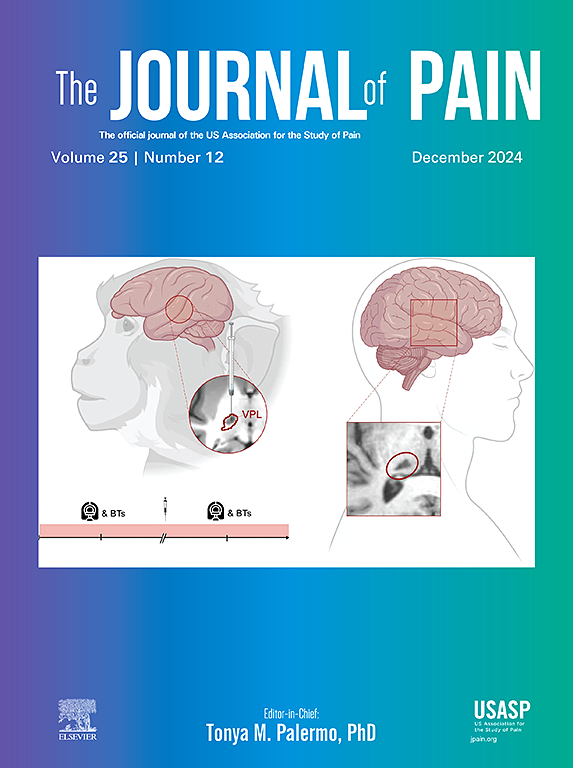Transgenic mice with a global depletion of toll-like receptor type 4 are largely protected from peripheral and central posttraumatic neuroinflammation
IF 4
2区 医学
Q1 CLINICAL NEUROLOGY
引用次数: 0
Abstract
Experimental bone fracture induces a posttraumatic inflammatory reaction which is characterized by local swelling, increased temperature, tenderness, thermal hypersensitivity and pain at the lesion site. As a consequence, some patients develop complex regional pain syndrome (CRPS), a chronic pain condition which often starts with exacerbating inflammation of the limb. The transmembrane receptor Toll-like receptor type 4 (TLR4) plays a central role in the innate immune response and not only engages with extracellular but also intracellular ligands, initiating intricate intracellular signaling cascades promoting inflammation. Depletion of TLR4 specifically in microglia attenuates posttraumatic pain, especially in males. Here, it is shown that male mice lacking TLR4 develop less inflammation after distal bone fracture, with attenuated swelling, local warming, macrophage invation into the dorsal root ganglion and spinal activation of microglia. Furthermore, expression of neuroinflammatory markers such as NGF, TNFα, ATF3 and Il4rα, is reduced in dorsal root ganglia. Together, the results support a proinflammatory role of TLR4 after distal bone fracture possibly initiating mechanisms leading to complex regional pain syndrome development in some patients which may be a promising novel for analgesic drug development.
Perspective
TLR4 is causally involved in the development of posttraumatic neuroinflammation characterised by upregulation of inflammatory mediators, invasion of macrophages into the dorsal root ganglion, as well as activation of microglia changes in the spinal dorsal horn in a murine model of human complex regional pain syndrome.
toll样受体4型缺失的转基因小鼠在很大程度上免受外周和中枢创伤后神经炎症的影响。
实验性:骨折引起创伤后炎症反应,其特征是局部肿胀、温度升高、压痛、热过敏和病变部位疼痛。因此,一些患者会出现复杂的局部疼痛综合征(CRPS),这是一种慢性疼痛状况,通常始于肢体炎症的加剧。跨膜受体toll样受体4型(TLR4)在先天免疫应答中起核心作用,不仅与细胞外和细胞内配体结合,启动复杂的细胞内信号级联反应,促进炎症。TLR4在小胶质细胞中的缺失减轻了创伤后疼痛,尤其是在男性中。本研究表明,缺乏TLR4的雄性小鼠远端骨折后炎症反应较少,肿胀减轻,局部升温,巨噬细胞侵入背根神经节,脊髓小胶质细胞活化。此外,神经炎症标志物如NGF、TNFα、ATF3和Il4rα在背根神经节中的表达减少。综上所述,研究结果支持TLR4在远端骨折后的促炎作用,可能启动导致一些患者出现复杂的局部疼痛综合征的机制,这可能是镇痛药物开发的一个有希望的新领域。视角:TLR4在人类复杂局部疼痛综合征小鼠模型中参与创伤后神经炎症的发展,其特征是炎症介质上调,巨噬细胞侵入背根神经节,以及脊髓背角小胶质细胞的激活改变。
本文章由计算机程序翻译,如有差异,请以英文原文为准。
求助全文
约1分钟内获得全文
求助全文
来源期刊

Journal of Pain
医学-临床神经学
CiteScore
6.30
自引率
7.50%
发文量
441
审稿时长
42 days
期刊介绍:
The Journal of Pain publishes original articles related to all aspects of pain, including clinical and basic research, patient care, education, and health policy. Articles selected for publication in the Journal are most commonly reports of original clinical research or reports of original basic research. In addition, invited critical reviews, including meta analyses of drugs for pain management, invited commentaries on reviews, and exceptional case studies are published in the Journal. The mission of the Journal is to improve the care of patients in pain by providing a forum for clinical researchers, basic scientists, clinicians, and other health professionals to publish original research.
 求助内容:
求助内容: 应助结果提醒方式:
应助结果提醒方式:


